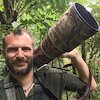You’ve ventured north to Shetland – you’ve heard all about the warm welcome, you’ve craved the sweeping horizons and the way you can see the weather coming from afar; those light nights of summer have been calling you, while you’ve read everything you can find about the islands that exist on the very edge of the British Isles’ consciousness.
And now you’re here, at last. Maybe it’s a short, flying visit. Perhaps you’re here a little longer. You’ve so much you want to do, so many places to visit – it can feel a little bewildering, all of this choice. I’m often asked where folk should go if they’ve got a spare day here, and I always recommend Unst.
(Of course, you’re already going to Unst – you’ve come this far north already, a journey to Britain’s most northerly point, overlooking the Stevensons’ impossible lighthouse on Muckle Flugga from the soaring vantage point of the Hermaness headland is practically obligatory…)
That lighthouse may be at the very northerly end of Britain, and looking out upon it may well be the objective of many a journey to Unst. It also marks the beginning of one of Shetland’s richest literary tales. Robert Louis Stevenson, better known as an author, spent time here in 1869, sent to learn the family trade of lighthouse engineering by his family and to put his dreams of a career as a writer firmly behind him. The story goes that he was inspired by the colourful characters he met during his stay on Unst – so inspired that he populated the cast of Treasure Islandwith scarcely concealed Unst folk. Legend has it that even the map of Treasure Island was loosely based upon the contemporary maps of Unst…
That may all be the stuff of rumours, as unreliable and vague as a treasure map. What’s certainly true is that Unst is a botanical treasure island, home to plants found nowhere else on Earth, let alone in Shetland. By the time Stevenson visited the island, Unst’s most famous botanist, Thomas Edmonston, had already discovered the endemic chickweed that was to bear his name for posterity before his untimely death in 1846, only 21 years old and tragically shot in the head, by accident, by a sailor on the coast of South America.



